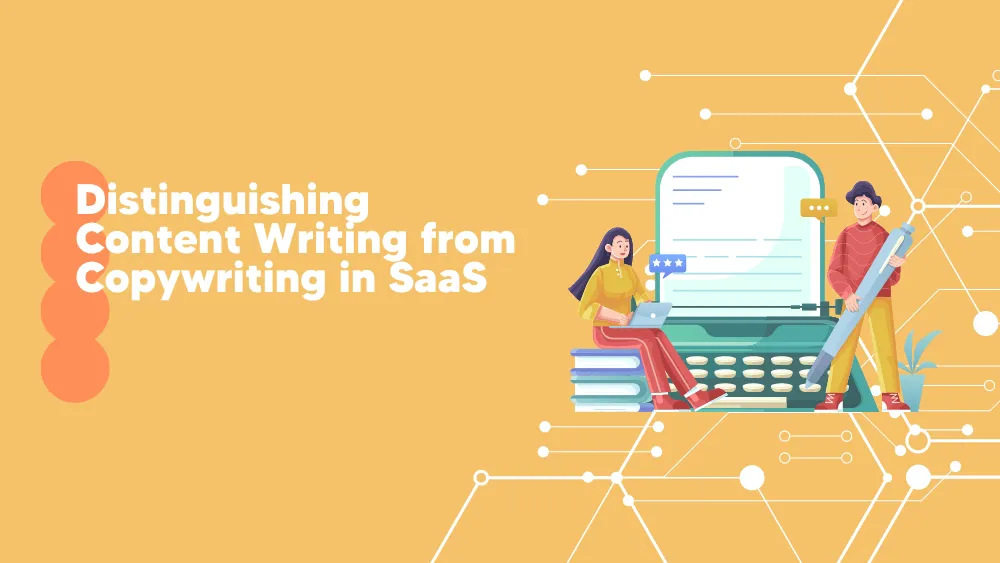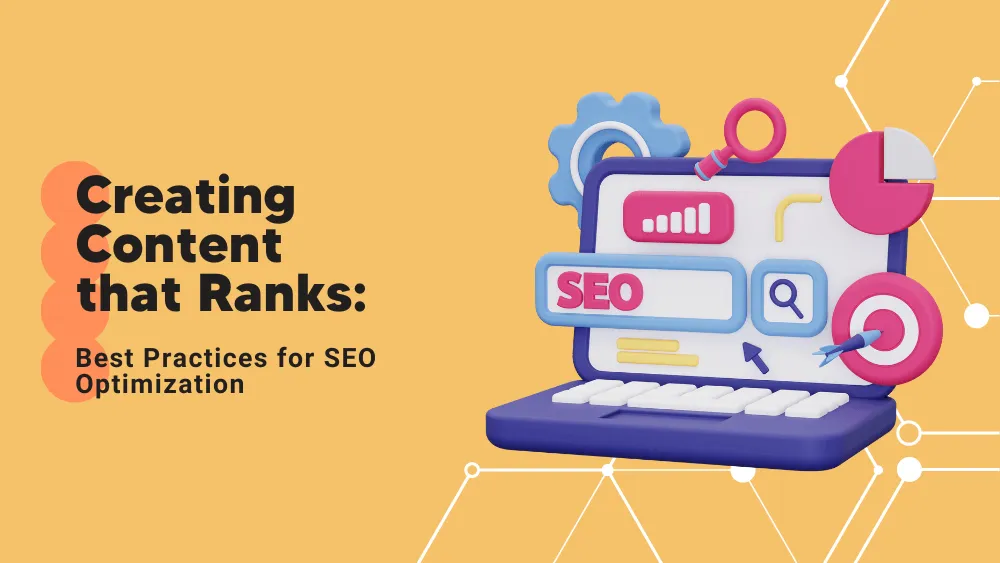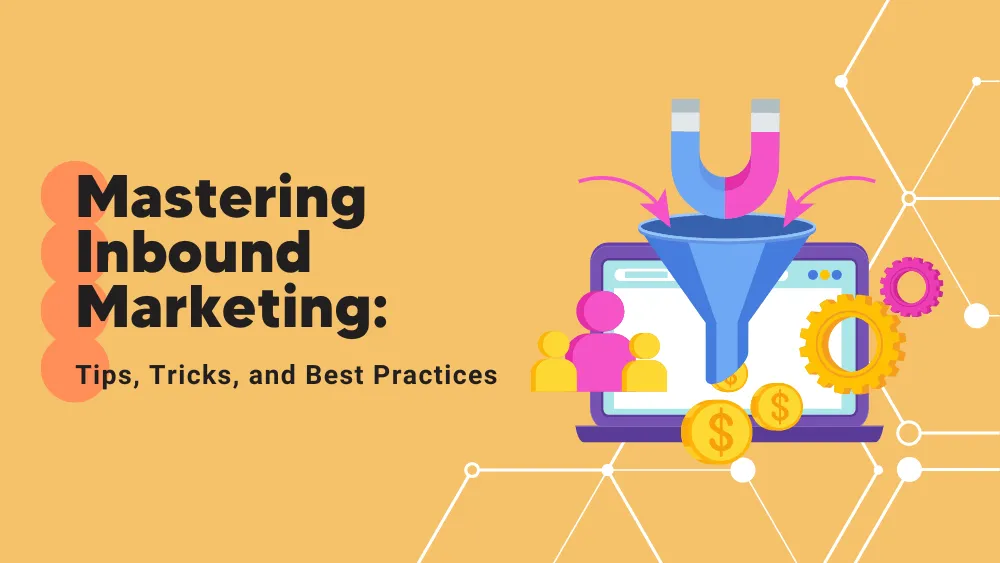Table of Contents
Written content, whether blog posts, whitepapers, or user guides, is the backbone of SaaS marketing and user engagement strategies. It educates, informs, and nurtures prospects and users, ensuring they understand the value of the Software and know how to leverage it to its full potential. On the other hand, copywriting—seen in advertisements, landing pages, and email campaigns—persuades and compels its audience to take action, whether signing up for a free trial, making a purchase, or attending a webinar.
As we delve deeper into this article, we’ll demystify the nuanced differences between content writing vs. copywriting within the SaaS space, shedding light on their unique roles, challenges, and significance.
Words Matter, But Their Purpose Matters More
Content Writing
Think about those moments when you’re exploring a new software solution, and you come across a lengthy article that unpacks its intricate features or a story about how the Software solved a particular problem for a company. This is the realm of content writing. The heart of content writing lies in informing and educating its readers. It’s not necessarily trying to get you to make a purchase right there and then. Instead, it’s giving you the insights, the context, and the understanding you need. This might be tutorials, user guides, blog posts, case studies, and even whitepapers for SaaS companies.
Characteristics- Educational: It aims to teach or provide insights.
- Value-driven: Content should provide tangible value, leaving the reader feeling enlightened.
- Long-form: Often, content writing delves deeper, exploring topics at length.
- Narrative: Content writing often adopts a storytelling approach, especially in case studies or user experiences.
Copywriting
Ever landed on a software’s homepage and felt an immediate urge to try it out? Or read an email that made you think, “This is the solution I’ve been looking for!”? That’s copywriting at work. Copywriting is designed to drive action. Whether it’s to sign up for a trial, subscribe to a newsletter, or purchase, it’s about persuasion and prompting a direct response.
Characteristics:- Concise: Every word counts. No space for fluff.
- Action-oriented: There’s always a clear call to action.
- Benefit-focused: It highlights how a product or service can solve a particular problem or enhance a situation.
- Engaging: The language is often energetic and compelling and speaks directly to the reader’s emotions and needs.
Understanding these nuances becomes our first step in leveraging the power of words for SaaS success. Different situations call for different approaches, and knowing when to inform versus when to persuade can make all the difference.
Content Writing vs. Copywriting: Differences Between Business Communication’s Pillars
While both serve as foundational stones in the marketing structure, their roles, objectives, and methods differ. Let’s delve deeper.
-
Objective’s Primacy
Content Writing revolves around the idea of holistic communication. Its main aim is to inform and build a connection with its readers. Content writing fosters engagement by providing insights, sharing information, or explaining complex topics. The emphasis is on nurturing a relationship over time, cultivating trust, and being a constant source of value.
Copywriting, meanwhile, is the catalyst in the communication process. It’s about provoking action. Every word and phrase is crafted to lead the reader toward a predetermined outcome. It could be to purchase, fill out a form, or perhaps click on a link. Copywriting is laser-focused on achieving its goal, often in the shortest possible time.
-
The Elegance of Style and Tone
The tone set by content writing is one of enlightenment. It’s comprehensive, inviting readers to explore topics further, seeking depth and clarity. It’s akin to a knowledgeable guide walking you through a vast library, ensuring you understand every section you venture into.
In contrast, copywriting is the town crier in the digital square. It announces, proclaims, and persuades. The style is sharp, with a resonance that should echo in readers’ minds. The message is designed to be memorable, eliciting feelings that drive the reader to act and act NOW.
-
Delving into Length and Depth
Content writing, by design, is expansive. It’s unafraid of word counts, often venturing into long-form pieces to ensure thorough coverage of a subject. Depth is its ally, ensuring that the audience doesn’t leave with lingering questions or half-baked ideas.
On the flip side, copywriting believes in simplicity. It’s short, getting to the heart of the matter as if there was no tomorrow. The concise nature ensures the core message isn’t lost but remains front and center, urging immediate comprehension and reaction.
-
Mapping the Customer Journey
Content writing is the compass in the customer’s journey. It indicates direction, builds the landscape, and fosters trust. Continuously offering value ensures that potential customers understand the brand, its ethos, and its offerings.
Copywriting acts as the milestones along the path. It’s about checkpoints and actions. Copywriting nudges them at every critical juncture in the customer journey, from awareness to consideration and decision, ensuring they move closer to the desired endpoint.
Navigating the Skills: Are All Copywriters Also Content Masters?
At first glance, the skills required for copywriting and content writing overlap. Both involve weaving words effectively, understanding audience psychology, and crafting resonating messages. However, the specialization of each field can lead to distinctive competencies. A proficient copywriter can create compelling, concise messages that prompt actions. Their strength lies in understanding how to evoke immediate reactions, employing persuasive tactics, and driving specific outcomes, be it a sale, a subscription, or a sign-up.
Conversely, a skilled content writer thrives in elaborating topics, ensuring clarity, and engaging readers for prolonged durations. They’re accustomed to research, presenting multifaceted viewpoints, and elucidating complex subjects for varied audiences.
While some professionals excel in both areas, it’s not a given that mastery in one automatically translates to proficiency in the other. The heart of the matter is the intention behind the writing: quick persuasion versus extended engagement. That said, a versatile writer who can pivot between these styles, understanding the nuances of each, is undoubtedly a valuable asset in the digital landscape.
Interplay Between Content Writing and Copywriting in SaaS
In the fast-paced, innovation-driven world of (SaaS), the blend of content writing and copywriting becomes indisposable. Their interplay can make or break customer acquisition, retention, and growth strategies. Let’s examine how these two merge in the SaaS realm.
Guiding Users with Effective Copy to Rich Content
The initial touchpoint for many users is often an enticing headline or a well-crafted snippet of a copy. This effective copy serves to capture the user’s attention immediately. Once engaged, they are directed to more in-depth content that delves deeper into topics of interest, such as the features, benefits, and innovative technology behind a SaaS product. In this process, the role of copywriting is to attract users, and content writing ensures they stay engaged, informed, and trusting.
Warming Up Leads with Content Before the Sales Finale
Before jumping into the big sales pitch, leads need to be nurtured. This is where content writing gets its work done. Content writing slowly warms up potential leads by consistently delivering valuable insights, breakdowns of complex software mechanisms, or even case studies. The whole process is like brewing the perfect cup of tea – you can’t rush it. Once they understand the product and its value proposition, copywriting sweeps in with a compelling sales pitch, turning a warm lead into a hot sale.
Best of Both Worlds
The beauty lies in blending. And SaaS companies often masterfully combine content and copy to maximize results.
- Blog Post with a Strong CTA: Consider a SaaS company that offers a cloud-based collaboration tool. They might have a detailed blog post highlighting the importance of seamless remote collaboration in today’s world. As readers reach the end, a powerful Call to Action (thanks to top-notch copywriting) offers a free trial of their tool. The content provides value and builds trust; the copy capitalizes on that trust to drive action.
- Informative Emails with a Pitch: Email campaigns are another arena where the blend shines. A SaaS firm might send out monthly newsletters with insights, the latest trends in the industry, and some helpful tips (rich content at play). Yet, nestled within this helpful content could be a well-crafted pitch (copywriting’s charm) about their premium features, urging the reader to upgrade.
Challenges and Tips in Writing for SaaS
When it comes to the realm of Software as a Service (SaaS), both copywriting and content writing share a unique set of challenges. These challenges stem from the nature of the SaaS industry itself, which often involves complex concepts, diverse user bases, and the need for clear and compelling communication.
Decoding the Complexities
Challenge: Simplifying Complex Software Concepts.
SaaS solutions often tackle intricate problems, resulting in Software that might be complex in its operation or functionality.
Striking the Right Balance
Challenge: Balancing the Technical with the Approachable.
While it’s essential to highlight advanced features and technological innovations, it’s equally vital not to alienate those less familiar with the jargon.
Catering to a Spectrum
Challenge: Engaging Diverse User Bases with Varying Tech Familiarity.
SaaS platforms often cater to a broad audience spectrum, from tech-savvy developers to beginners.
Perfecting the Pitch
Challenge: Though not exclusive to SaaS, finding the right messaging can be particularly challenging, given the complexity and novelty of many software products.
Tools for content writing
Content writers havemanyf tools to hone their craft and optimize their content. Grammarly and Hemingway Editor stand out for ensuring grammatical accuracy and refining content for clarity and readability. Collaborative tools like Evernote and Google Docs provide real-time drafting, sharing, and editing platforms. To stay updated with trending topics and improve SEO-driven content, tools such as BuzzSumo and SEMrush are indispensable. By employing these software solutions, content writers can create engaging and SEO-friendly pieces.
Tools for copywriters
Copywriters, while also concerned with the precision of their text, prioritize persuasive and attention-grabbing content. The Headline Analyzer is a particularly valuable tool, helping craft powerful titles and headers that captivate readers. To understand how effective their copy is in real-world scenarios, A/B testing platforms like Optimizely are essential. In the age of AI, platforms like Copy.AI and Writesonic offer AI-driven copy suggestions, which can be incredibly beneficial during brainstorming and drafting sessions. These tools ensure that copywriters produce compelling content that drives action.
Conclusion of Content Writing vs. Copywriting
The landscape of SaaS communication is vast and varied, and at its heart lie two powerful pillars: content writing and copywriting. While distinct in their objectives and methodologies, their synergy is undeniable. Content writing educates and nurtures, offering depth, value, and sustained engagement. It serves as a guide, walking users through complex software terrains and ensuring they grasp a product’s value proposition.
Conversely, copywriting is the magnetic force pulling potential users into the SaaS universe. It’sconciset, persuasive, and action-driven, ensuring that users not only notice a product but are compelled to interact with it through trials, purchases, or other forms of engagement.
For SaaS businesses, mastering the balance and interplay between these two forms of writing is just the thing. They bridge the gap between awareness and conversion, education and action. As the SaaS industry continues to evolve, the dual dance of content writing and copywriting remains central to connecting products with their potential user bases, addressing their needs, and driving business growth.





